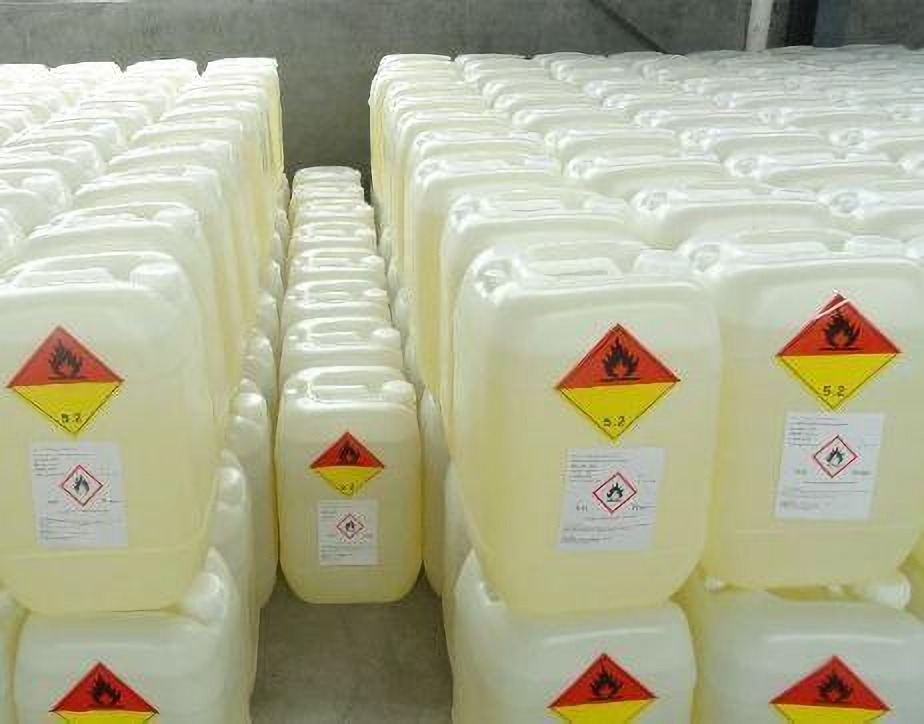Introduction to Organic Peroxides
Organic peroxides are organic compounds containing -O-O-peroxy functional groups formed by replacing hydrogen atoms in hydrogen peroxide with organic groups such as alkyl groups, acyl groups, and aryl groups. The characteristic is that when heated above a certain temperature, it will decompose to produce oxygen-containing free radicals, which is unstable and easy to decompose. The organic peroxides produced by chemical industry are mainly used as polymerization initiators and catalysts for synthetic resins. In the field of polymer materials, it can be used as an initiator for free radical polymerization, an initiator for grafting reaction, a cross-linking agent for rubber and plastics, a curing agent for unsaturated polyester, and the molecular weight and molecular weight in the preparation of spinning grade polypropylene. Molecular weight distribution modifier. The polluted air in the environment can produce peroxyacyl nitrate compounds through free radical reaction under the action of light, which is one of the species of photochemical oxidants. It is strongly irritating to the skin, eyes and mucous membranes, and is an important pollutant in the atmosphere. Such substances are inflammable and explosive dangerous goods, and attention should be paid to safety in use. Generally, four indicators, active oxygen content, activation energy, half-life and decomposition temperature, are used as the basic basis for selection.
physical properties
Most organic peroxides are colorless to pale yellow liquids, or white powders to crystalline solids. Generally weakly acidic, most of them are insoluble in water, but easily soluble in organic solvents such as phthalic acid and dimethyl ester. They are a class of unstable flammable and explosive compounds.
chemical properties
The structural characteristics of the peroxy functional group in organic peroxides determine that the peroxides have the following chemical properties:
(1) It has a strong oxidizing effect.
(2) It has a natural decomposition property, and most of the peroxide active oxygen is reduced above 40 °C.
(3) Acid and alkaline substances can promote decomposition. Strong acids and hydroxides of alkali metals and alkaline earth metals (solid or high-concentration aqueous solutions) can cause violent decomposition.
(4) Iron, cobalt, manganese organic peroxides and redox system compounds significantly promote the decomposition.
(5) Strong reducing amine compounds and other reducing agents significantly promote the decomposition.
(6) Iron, lead and copper alloys can promote their decomposition.
(7) Rubber can promote its decomposition.
(8) The local temperature increase caused by friction, vibration or shock to the storage container can promote decomposition.
Classification
The main varieties of organic peroxides are hydroperoxide (ROOH), dialkyl peroxide (ROOR’), diacyl peroxide (RCOOOOCR’), peroxyester (RCOOOR’), peroxycarbonate ( ROCOOOOCOR’) and ketone peroxide [R2C(OOH)2], etc., which have different application characteristics. For example, benzoyl peroxide (BPO) is usually used as an initiator for free radical polymerization and a curing agent for unsaturated polyesters; diethylpropyl benzene peroxide (DCP) can be used as a crosslinking agent and an initiator for melt grafting. Generally, four indicators, active oxygen content, activation energy, half-life and decomposition temperature, are used as the basic basis for selection.
The decomposition temperature of the organic peroxide at the effective rate largely determines its use. Other important factors are cost, solubility, and safety. Efficiency and type of free radicals generated, necessity for refrigerated storage and shipping, compatibility with production systems, possible effects on the product and ability to be activated, etc. Organic peroxides can be decomposed at a certain rate at high temperature or room temperature to generate reactive free radicals.
All organic peroxides are thermally unstable and decompose more rapidly with increasing temperature. A commonly used quantitative method for the reactivity of organic peroxides is to measure half-life, that is, the time required for a certain amount of peroxide to decompose to half its initial amount at a certain temperature. Half-life data for commercial organic peroxides are now available on computer floppy disks. A computer menu program can be used to select the appropriate peroxide for a given polymerization or process condition.[/vc_column_text][/vc_column][/vc_row]






